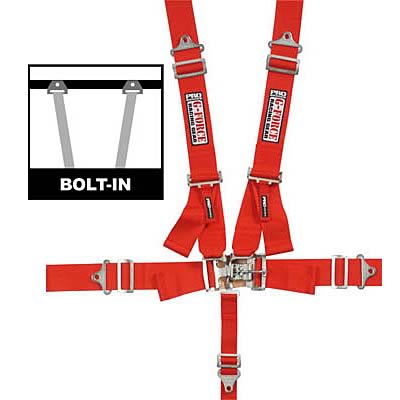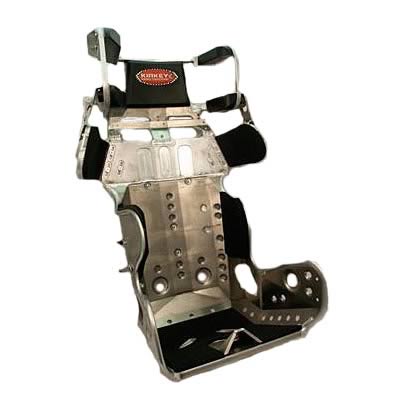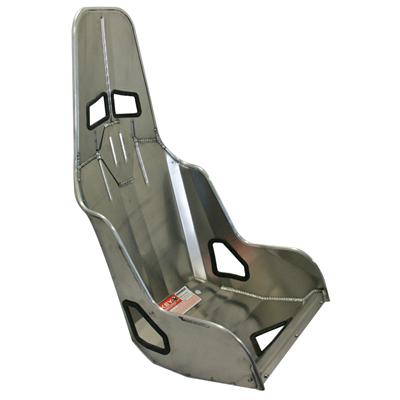http://www.nhra.com/contacts/tech_faq.html
http://metalgeek.com/static/cope.pcgi
always use slightly thicker chromemoly steel in case the rules change gusset the angles and exceed the gusset sizes, base plates should bolt and weld with grade 8 bolts to frame sections or backing plates
http://www.pdkfabrication.bravepages.com/bre_replica.htm
http://www.pirate4x4.com/forum/showthread.php?t=874724
http://pg.photos.yahoo.com/ph/larryjohnson97438/album?.dir=/a6b1&urlhint=actn,ren:s,1:f,0
http://www.rollcagecomponents.com/index.htm
http://www.jalopyjournal.com/?p=8229
http://www.pirate4x4.com/forum/showthread.php?t=837966
http://www.jegs.com/instructions/555/rollcage.pdf
http://www.rollcagecomponents.com/kits/rollcagekits.htm
http://www.stu-offroad.com/guards/sportbar/roll-1.htm
http://www.burningcage.com/roll-cage.shtml
http://www.stockcarproducts.com/rollcage.htm
http://www.racefabinc.com/rollcages.htm
if your going to add weight, to a car or truck,make it useful weight that adds safety and stiffens the frame, build a roll cage and work on a stiff frame, and ID sure run some diagonal braces from the upper roll bar to the trucks frame in the bed over the axle, or on a car following info you can get from the major racing associations in their rule books
read this
http://phors.locost7.info/contents.htm
http://www.circletrack.com/techarticles ... index.html
http://www.daymotorsports.com/product/126/ROLL-CAGE-KIT
http://www.jegs.com/webapp/wcs/stores/s ... 2621006780
http://www.millerwelds.com/education/ar ... cle96.html
http://vansantent.com/tube_bending_mach ... enders.htm
OFF THE MILLER WELD SITE
"I just read this thread and will agree with everything in the replies, but I believe that there's been one important thing that was overlooked and it will show up during tech inspection.
Creg stated that he wanted to use .095" x 1.5" tube for the roll cage. I would recommend that he get a rule book from whatever sanctioning body this car will fall under and find out what the min. wall thickness allowed is. My point is, lets say, ......... the rule book says that the min. wall is .095", this will be where the problem lies. In the process of bending tubing, the tube will stretch and this will cause the wall thickness to become less than what it is when straight. If the rule book says .095" is the min. thickness allowed, then at most all the bends, in the roll cage, the wall thickness is less than .095" and the car can fail inspection. This is especially true when there are any 90 degree bends involved.
Having worked with pipe and tubing most of my life and also the building of a few roll cages, this minor point has been overlooked quite a few times by others, until you hit the tech inspections, and that's where you DON"T want to find any BIG problems.
You might want to check with someone in tech or somebody that does know if this will present a problem. I do know that when you bend pipe or tube something HAS to give and it's the wall thickness that does the giving.
Just thought I'd bring this up, because I'd hate to see all your work go to waste for something that was overlooked, during your time consuming build.
Hope this info helps.
Bill "
and "
have a story about cage wall thickness.
When I built my chassis I took it to get certified as soon as I had it welded up. I knew I probably wouldn't get the car done before the 3 year cert ran out (got 1 year left), but I wanted to make sure I had it right before I got any further into the build. NHRA Tech sonic tested the cage and said the main hoop didn't test right? He said it was on the thin side. After he and a second tech had a discussion they slapped a sticker on it. (Sure wish I knew what was said in that little pow-wow that made them pass it). I said does that mean I can continue to build, He said yup, have at it. My son and I jumped in the truck to leave and we both looked at each other at the same time and I said "I don't feel too good about this". Jeff said he didn't either. I was about to sell it as a 10.99 chassis when I happened to talk to a friend of mine who happens to be an X ProMod guy and is involved with our local track. He put me in touch with an IHRA tech and said to have him double check it before I did anything. In the mean time I procured a sonic tester from a construction company who is a customer of mine. I tested ALL the tubes and wrote the test numbers on the tubes. (numbers are still there 2 yrs later). I was getting good readings on all the tubes. I then went to the IHRA tech and he actually got a couple thou. thicker reading than I did. So, I guess the moral of the story is those sonic testers aren't always dead on.
Every time I see my friend I thank him for having me get a second opinion. "
stock seat lap and cross shoulder belts were never meant to do more than provide easy access, and HELP prevent serious injuries in low speed crash conditions,under street driving conditions and they were never designed to allow you to do more than increase your chances of not hitting the windshield, or exiting the car during a crash or expected to prevent injuries at speeds over about 45 mph and lately they are dessigned to be used with air bags
racing belts are designed to be bolted to a substantial roll cage,and are more or less expected to be stressed to higher loads at higher speed and are designed to limit your body's exiting the roll cage, and are designed to be used with a racing seat , helmet, fire suit and significant internal bracing on the seat and cage
http://www.summitracing.com/parts/BLL-2004148/





http://metalgeek.com/static/cope.pcgi
always use slightly thicker chromemoly steel in case the rules change gusset the angles and exceed the gusset sizes, base plates should bolt and weld with grade 8 bolts to frame sections or backing plates
http://www.pdkfabrication.bravepages.com/bre_replica.htm
http://www.pirate4x4.com/forum/showthread.php?t=874724
http://pg.photos.yahoo.com/ph/larryjohnson97438/album?.dir=/a6b1&urlhint=actn,ren:s,1:f,0
http://www.rollcagecomponents.com/index.htm
http://www.jalopyjournal.com/?p=8229
http://www.pirate4x4.com/forum/showthread.php?t=837966
http://www.jegs.com/instructions/555/rollcage.pdf
http://www.rollcagecomponents.com/kits/rollcagekits.htm
http://www.stu-offroad.com/guards/sportbar/roll-1.htm
http://www.burningcage.com/roll-cage.shtml
http://www.stockcarproducts.com/rollcage.htm
http://www.racefabinc.com/rollcages.htm
if your going to add weight, to a car or truck,make it useful weight that adds safety and stiffens the frame, build a roll cage and work on a stiff frame, and ID sure run some diagonal braces from the upper roll bar to the trucks frame in the bed over the axle, or on a car following info you can get from the major racing associations in their rule books
read this
http://phors.locost7.info/contents.htm
http://www.circletrack.com/techarticles ... index.html
http://www.daymotorsports.com/product/126/ROLL-CAGE-KIT
http://www.jegs.com/webapp/wcs/stores/s ... 2621006780
http://www.millerwelds.com/education/ar ... cle96.html
http://vansantent.com/tube_bending_mach ... enders.htm
OFF THE MILLER WELD SITE
"I just read this thread and will agree with everything in the replies, but I believe that there's been one important thing that was overlooked and it will show up during tech inspection.
Creg stated that he wanted to use .095" x 1.5" tube for the roll cage. I would recommend that he get a rule book from whatever sanctioning body this car will fall under and find out what the min. wall thickness allowed is. My point is, lets say, ......... the rule book says that the min. wall is .095", this will be where the problem lies. In the process of bending tubing, the tube will stretch and this will cause the wall thickness to become less than what it is when straight. If the rule book says .095" is the min. thickness allowed, then at most all the bends, in the roll cage, the wall thickness is less than .095" and the car can fail inspection. This is especially true when there are any 90 degree bends involved.
Having worked with pipe and tubing most of my life and also the building of a few roll cages, this minor point has been overlooked quite a few times by others, until you hit the tech inspections, and that's where you DON"T want to find any BIG problems.
You might want to check with someone in tech or somebody that does know if this will present a problem. I do know that when you bend pipe or tube something HAS to give and it's the wall thickness that does the giving.
Just thought I'd bring this up, because I'd hate to see all your work go to waste for something that was overlooked, during your time consuming build.
Hope this info helps.
Bill "
and "
have a story about cage wall thickness.
When I built my chassis I took it to get certified as soon as I had it welded up. I knew I probably wouldn't get the car done before the 3 year cert ran out (got 1 year left), but I wanted to make sure I had it right before I got any further into the build. NHRA Tech sonic tested the cage and said the main hoop didn't test right? He said it was on the thin side. After he and a second tech had a discussion they slapped a sticker on it. (Sure wish I knew what was said in that little pow-wow that made them pass it). I said does that mean I can continue to build, He said yup, have at it. My son and I jumped in the truck to leave and we both looked at each other at the same time and I said "I don't feel too good about this". Jeff said he didn't either. I was about to sell it as a 10.99 chassis when I happened to talk to a friend of mine who happens to be an X ProMod guy and is involved with our local track. He put me in touch with an IHRA tech and said to have him double check it before I did anything. In the mean time I procured a sonic tester from a construction company who is a customer of mine. I tested ALL the tubes and wrote the test numbers on the tubes. (numbers are still there 2 yrs later). I was getting good readings on all the tubes. I then went to the IHRA tech and he actually got a couple thou. thicker reading than I did. So, I guess the moral of the story is those sonic testers aren't always dead on.
Every time I see my friend I thank him for having me get a second opinion. "
stock seat lap and cross shoulder belts were never meant to do more than provide easy access, and HELP prevent serious injuries in low speed crash conditions,under street driving conditions and they were never designed to allow you to do more than increase your chances of not hitting the windshield, or exiting the car during a crash or expected to prevent injuries at speeds over about 45 mph and lately they are dessigned to be used with air bags
racing belts are designed to be bolted to a substantial roll cage,and are more or less expected to be stressed to higher loads at higher speed and are designed to limit your body's exiting the roll cage, and are designed to be used with a racing seat , helmet, fire suit and significant internal bracing on the seat and cage
http://www.summitracing.com/parts/BLL-2004148/





